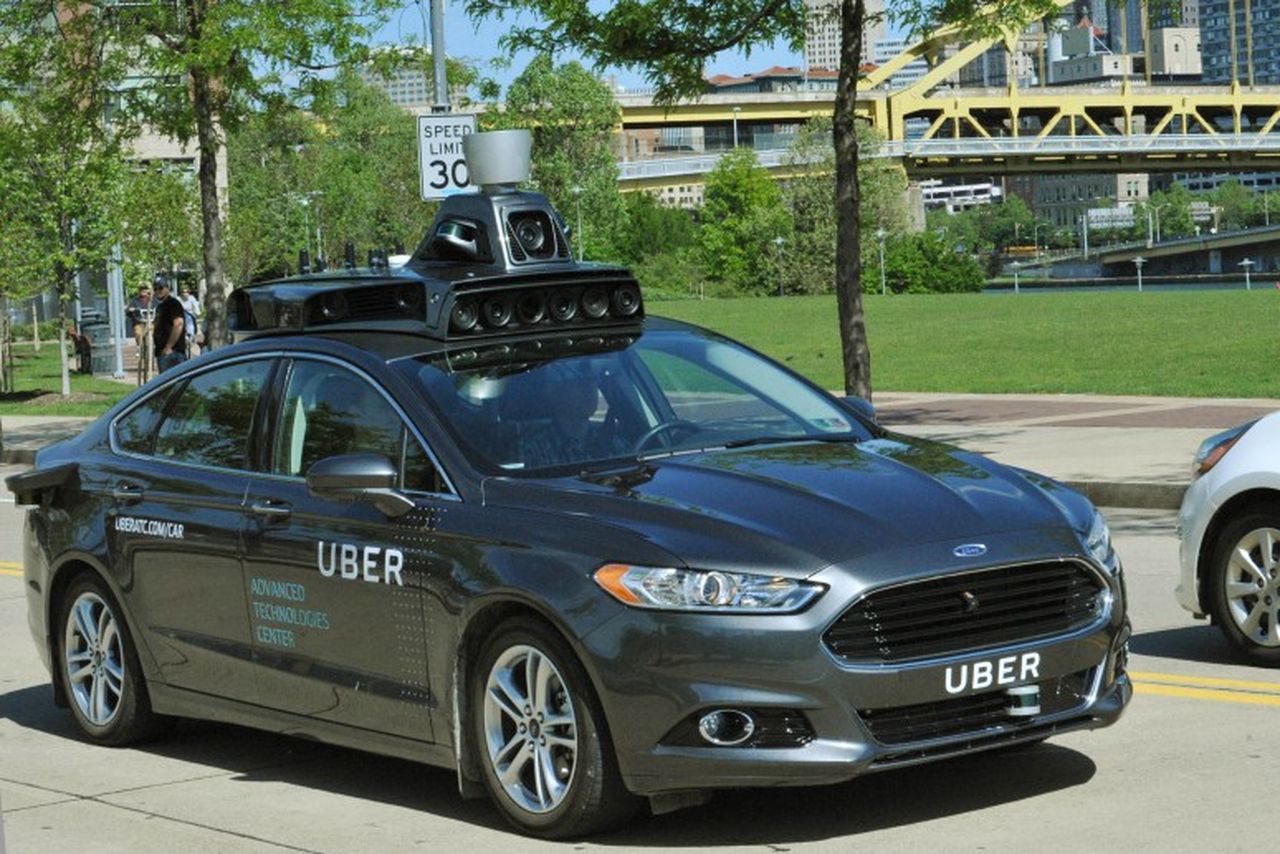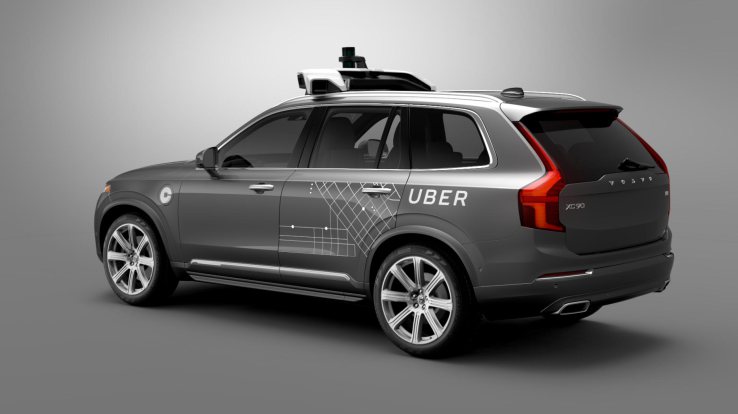Uber starts testing robotaxy in Pittsburgh

At the very beginning of last year, Uber announced its intention to develop its own technology of autonomous driving. Then it seemed that Uber was still very far from getting a full-fledged car - at least 2-3 years. And this is despite the fact that such a giant as Google Inc. has been working in this direction for several years now. But no, recently the head of the company Travis Kalanick (Travis Kalanick) announced that already this month in Pittsburgh (Pennsylvania, USA) the world's first service of robotic taxis will start working in test mode.
The company is going to use about 100 Volvo XC90s modified cars. Each such taxi is equipped with a complete autonomous control system. True, cars will not drive on the roads of Pittsburgh without people. Behind the wheel will be an employee of the company - an engineer who can take control in the event of an emergency. Next to him in the passenger seat will be the "co-pilot": the person who will analyze the situation. On the trip, the co-pilot will take notes on the features of the autonomous control system. And in the trunk of the car will place a computer with liquid cooling, it is the central part of the entire system, its “brain”.
How did Uber manage to create its own version of an autonomous car so quickly? The fact is that the management understood the complexity of the task, and decided to hire the best specialists who work in the development of a weak form of AI. Dozens of people were hired. The headquarters of the project was opened in the very Pittsburgh, where the robotici run-in takes place.
This city is home to Carnegie Mellon. In this university, at the faculty of robotics, many specialists studied, who are now known for their achievements in the field of autonomous vehicle control systems. In particular, it was here that the creator of the autonomous car unit Googe Sebastian Thrun studied and worked. At university, he worked on the issue of robotization of cars for seven years, after which he began working on the same topic as an employee of Google. Chris Urmson, ex-head of the Google mobiles unit, was also a graduate student at this university.
The head of Uber has long wanted to createown robilmobile This was told the head of the company Carnegie Robotics John Bares (John Bares). Now this company produces components for autonomous industrial robots used in the extraction of minerals, in agriculture and in military affairs. “I tried to lower it from heaven to earth three times. But in this case [creation of robotaxi - approx. ed.] he was persistent, ”says Bares about the Uber leader. Bares himself joined the transportation company in January 2015, and since then has hired hundreds of engineers, robotics specialists and conventional mechanics to participate in the project to create an autonomous car Uber. The company's goal is very ambitious - to replace more than 1 million of its drivers with an autonomous control system in the shortest possible time.
Many scientists say that until the creation of fully autonomous vehicle control systems, there are still many years, perhaps decades. Kalanik disagrees with this, arguing that his company can do everything much faster. That's because, he says, Uber is a for-profit company, not a research institute, and you need to work quickly. After all, right now a similar technology is being developed by many companies, including Google, Tesla Motors, Ford, Volvo, Mercedes and other companies.

Volvo and Uber signed a cooperation agreement, agreeing to invest about $ 300 million to create a full-fledged robotic car that could get on the roads of US cities and other countries by 2021. Uber has made deals of this kind with other companies. The company continues to hire robotics specialists and capable mechanics who are also involved in the robotoxy project.
Unlike Google and Tesla, Uber does not plan to manufacture its own cars. Instead, it is developing unified autonomous control systems for cars from other manufacturers, primarily for Volvo Cars models. The autonomous vehicle control system used in the Volvo XC90 includes cameras, lasers, a radar installation and GPS modules.
Already this month, Pittsburgh residents will be able to call robotaxy using a regular Uber mobile app. Passengers can only be placed in the back seat of the car. But this trip will be completely free within the city. During the trip, passengers will be provided with tablets, on the display of which the remaining path to the target will be shown. Clients of the company will be able to see and explain how the machine works with autonomous control.
The most difficult moment of a trip according to developers of robotoxy Uber are bridges. There are over 500 of them in Pittsburgh, and each one is different. An employee of the company who takes the driver's seat will take the steering wheel in his hands if a single beep sounds when approaching the bridge or any other place. The second signal will mean that the computer has taken over.
For many months, Uber has been working on creating detailed maps for its robotaxi. Maps include not only roads, they are marked with buildings, structures, fire hydrants, traffic lights and in general everything that is on the streets of Pittsburgh. Starting to move, the car automatically collects data about the objects around it. All this information is processed using a PC located in the trunk, as mentioned above. When driving, a car compares what is on the map with the current situation. Robotaksi with the ability to recognize pedestrians, cyclists and other objects.
Work is progressing very quickly. As you can see, the company is making some progress. According to Kalanik, all this becomes possible due to the fact that the company constantly hires new talented specialists. “If Uber wants to overtake Google and be a leader in autonomous vehicle management systems, we must have better minds,” he says.
